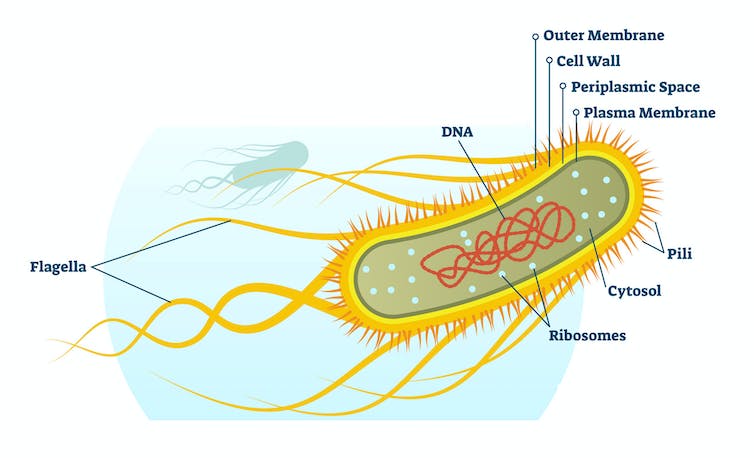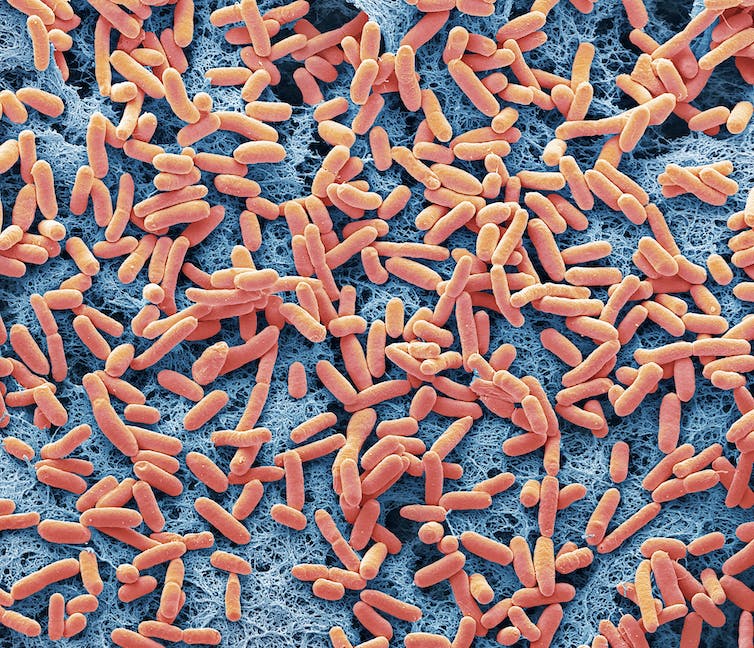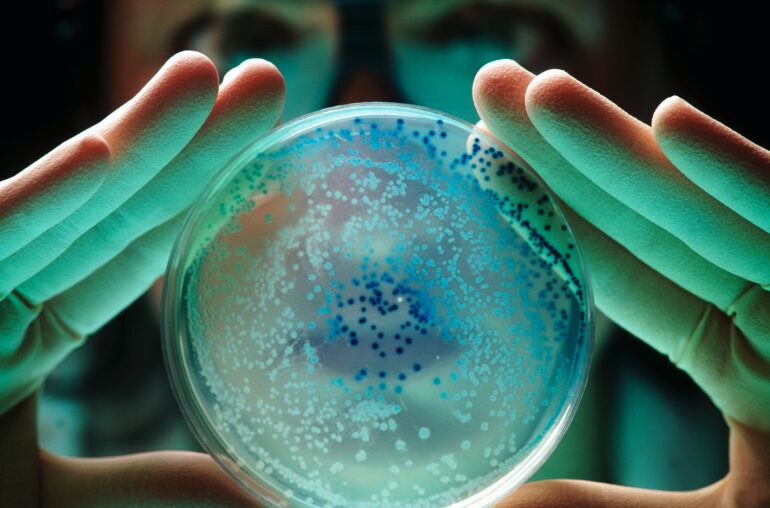In 1857, a young pediatrician named Theodor Escherich discovered what may very well be the most well-studied organism today. The rod-shaped bacterium named Escherichia coli, better known as E. coli, is a very common microbe residing in your gut. It’s also the workhorse of early molecular biology.
Luck likely played a role in its rise in popularity among scientists. Even under 19th-century lab conditions, where sterilization techniques were not perfect and little was known about what food bacteria need to survive, this microbe was easy to cultivate and grow quickly. It can replicate in under 20 minutes and can use a variety of carbon sources for energy.
As the first species to have its physiology thoroughly explored, E. coli has contributed fundamental knowledge to the fields of microbiology, molecular genetics and biochemistry, including how DNA replicates, how genes create proteins and how bacteria share genetic material among themselves – a huge cause of antibiotic resistance.

E. coli is a rod-shaped bacterium with flagella that help it move.
VectorMine/iStock via Getty Images Plus
However, the favored use of E. coli in the lab has also led to oversimplifications in the world of microbiology, distracting researchers from the thousands of other bacterial species that remain understudied.
As microbiologists studying the inner mechanisms of antibiotic tolerance, we and colleagues in our lab examine bacterial species that physiologically differ from E. coli in hopes of expanding the existing pool of knowledge within microbiology. For instance, drugs like penicillin fall into a class of antibiotics that target the outer defenses of the bacteria. We found that while E. coli succumbs to this attack, species like Vibrio or Klebsiella can tolerate it and survive.
A one-size-fits-all approach may have worked in the past, but embracing the true diversity of microbes could help scientists better fight the rise of antibiotic resistance.
Scientific good of E. coli
Researchers worked out the very foundations of life using E. coli. The significance of this bacterium for the field of biology is probably best captured by the biochemist Jacques Monod, who famously said, “What is true for E. coli is true for the elephant.”
Because researchers were able to watch regions of E. coli‘s DNA become mobile, allowing bacteria to transfer DNA among one another in a process called conjugation, scientists learned to manipulate this process to genetically alter organisms and study the effects of different genes.
E. coli helped reveal that bacterial chromosomes are circular and that manipulating a specific enzyme can allow scientists to easily clone parts of the bacterial genome.

While E. coli are common residents in your gut, certain strains can cause serious infections.
Steve Gschmeissner/Science Photo Library via Getty Images
E. coli also opened doors to using…



